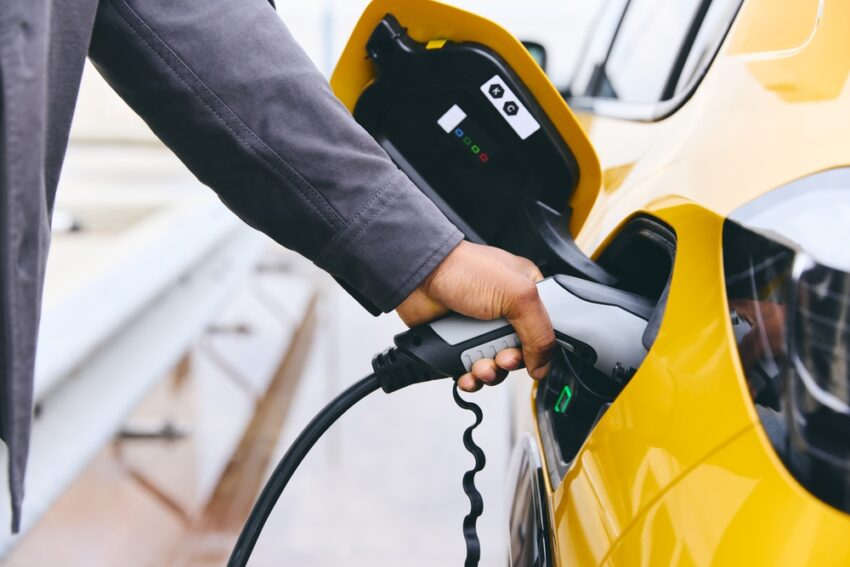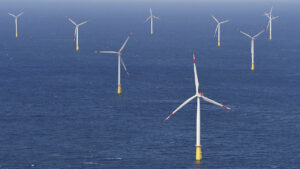Business
Increasing responsible mining is crucial to overcome the bottlenecks in the green transition

As governments around the world urgently seek to accelerate the green transition, the building blocks of a low-carbon economy face a worrying barrier.
In a new study published in May, the International Energy Forum (IEF) warns of major bottlenecks in global copper supply chains, with rising demand driven by clean energy technologies rapidly outpacing production capacities. Given copper’s critical role in renewable energy infrastructure and technologies, looming shortages could severely hamper the world’s ability to meet critical climate goals.
According to calculations by BloombergNEF, an additional 12.8 million tons of copper are needed by 2030 to keep the Net Zero agenda on track – a stark contrast to the 27 million tons produced last year. Meanwhile, achieving net-zero emissions by 2050 will require a staggering 460% increase in copper production, necessitating the opening of 194 new large-scale mines; yet the IEF report notes current trends, suggesting only 35 will materialize. In this context, the world’s leading mining companies must accelerate their socially and environmentally responsible mining activities to turn the tide before climate change reaches a catastrophic threshold.
Mineral roadblocks threaten the green transition
In particular, roughly coinciding with the IEF’s copper demand analysis, the International Energy Agency’s (IEA) ‘Global Critical Minerals Outlook 2024’ confirms significant shortages of minerals essential in the production of electric vehicles (EVs), solar panels, wind turbines and other clean technologies at the heart of the green transition. As Fatih Birol, Executive Director of the IEA, has rightly pointed out, the “world’s appetite” for green products is “growing rapidly – but we cannot satisfy it without reliable and growing supplies of crucial minerals” such as copper, nickel and cobalt.
Although investment in mining critical minerals rose by 10% last year, the pace was slower than in 2022, with the IEA forecasting that only 70% and 50% of global copper and lithium demand will be met respectively by 2035 . The IEA predicts that limiting global temperature rise to 1.5 degrees Celsius above pre-industrial levels by 2040 will require an investment of $800 billion in mining projects.
One of the pain points in mineral production is the fact that clean energy technologies require significantly more copper than their fossil fuel counterparts. For example, EVs use three to five times as much copper as internal combustion engine vehicles, in addition to the copper needed to upgrade electrical grids. Worryingly, expert warnings about the deepening copper bottleneck have been largely ignored, with weak exploration and regulatory inertia exacerbating the growing gap between supply and demand.
Unpacking fluctuations in mineral prices
While production barriers and rising demand have driven copper prices into the stratosphere in recent months, other crucial minerals needed for the green transition, such as cobalt and lithium, have seen significant price declines over the past year, according to the IEA.
In the case of lithium, slowing growth in the EV market is the main factor pushing down prices. Lithium producers – especially in Australia, which accounts for 40% of global supply – have responded notably to this shock by cutting costs and scaling back operations by 10% of global demand in the first quarter of 2024 alone , in an attempt to raise prices. However, cobalt miners have not had the opportunity to follow suit simply because of the way it is mined in virtually every country in the world.
As Goldman Sachs rightly pointed out earlier this year, cobalt is largely a byproduct of copper and nickel – 98% to be precise, according to the Cobalt Institute – meaning that high copper and nickel production will inevitably keep cobalt supplies high for the foreseeable future .
DRC and Indonesia on the front line
In the Democratic Republic of Congo (DRC) – responsible for 73% of global cobalt production – the mineral is largely extracted from ores containing copper-cobalt oxides or sulphides.
In the DRC, Chinese copper-cobalt mining giant CMOC has ramped up local copper production to meet global demand. Production in 2024 is expected to reach 570,000 tonnes, compared to approximately 420,000 tonnes last year, largely due to the recently operational KFM mine and additional production at the TFM mine. Notably, CMOC’s rising copper production has led to increased cobalt production, which has largely contributed to the company becoming the largest cobalt miner in the world.
Meanwhile, rising nickel production in Indonesia, home to the world’s largest reserves and responsible for 40% of supply last year, is further boosting global cobalt supplies – 40% of which could be sourced from nickel by 2030. With demand for nickel soaring, Indonesia has increased production by a factor of ten over the past decade, with miner PT Vale Indonesia, owner of the Sorowako mine – the country’s third-largest nickel mine – one of the companies which doubled production.
Vale already produced almost 65,000 tonnes of nickel at Sorowako last year and recently announced plans to build an additional $2 billion HPAL plant – where nickel and cobalt are separated from ore – to complement the two other HPAL plants currently under construction in Sorowalo and Pomalaa. . As with CMOC’s copper production, Vale’s nickel ambitions will continue to fuel cobalt’s upward trajectory.
Looking forward
Nevertheless, as Financial Times editor Roula Khalaf has argued, strong cobalt production will not keep prices low indefinitely, with rising copper prices and cobalt supplies driving longer-term demand for cobalt, much of which was largely responsible for the previous shortage for the temporary market shift. of cobalt-based EV batteries. Furthermore, Khalaf rightly pointed out the high energy storage capacities of nickel-manganese-cobalt batteries compared to other battery technologies, making them particularly suitable for “the heavier, longer-range vehicles favored by the West” and setting up cobalt for a demand and a price recovery further into the future.
As climate impacts increase globally and countries scramble to get the green transition off the ground, responsible extraction of critical minerals must dramatically accelerate to meet rising demand while decoupling manufacturing growth from the growth of environmental impacts. In light of the recent warnings from the IEF and the IEA, temporary market fluctuations should not lead to a short-sighted rollback. In the absence of long-term, expanded production of copper, nickel, cobalt and other vital green transition minerals, The global climate goals are in danger of falling out of reach with disastrous consequences for the planet.













